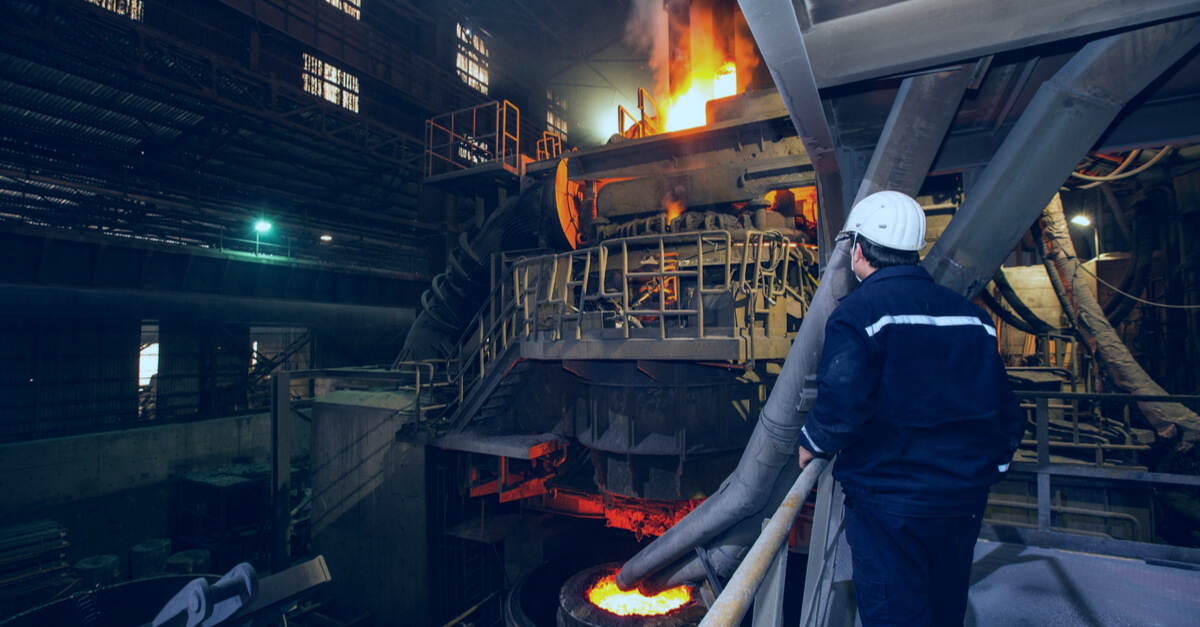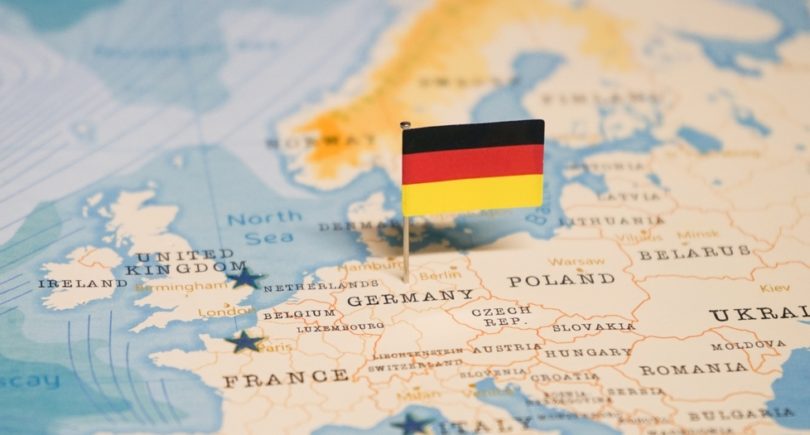
Posts Global Market DСH Steel 343 08 October 2019
The suspension of the two companies will reduce export revenue of the sector by USD 200–250 million
How can a country with a 2.2% share in the total production capacity impact the global market? Say, make prices fall by 15–25%. This is about Turkey, which is experiencing a crisis in the steel industry and which caused a collapse in prices for scrap and, consequently, for finished products in August and September.
On the dark side
In the first week of October, the media, at least those that cover developments in the industry and in the iron & steel sector, were full of news about the suspension of capacities at two steel companies, Dnipro Metallurgical Plant (DMZ) and Dniprovskyi Iron and Steel Works (DMK).
According to official information, DMZ will close its main shops to carry out large-scale modernization. The works were scheduled for the period of low demand in the company’s sales markets. According to Metal Expert, the only operating blast furnace will be suspended in October, resuming operation only in March next year.
DMK decided not to put into operation two blast furnaces that had been suspended for repairs, a basic oxygen furnace, and a continuous casting machine. As a result, one blast furnace, one BOF and two continuous casting machines will remain in operation. DMK management explains this step by a ‘global crisis in the steel market, a decrease in profit margins, and a lack of floating assets.’ According to Metal Expert, this will mean a 50% decline in production volumes.
Both companies produce long products. Last year, DMK sold mainly semi-finished products: square billets to the Middle East countries and pig iron to the U.S. DMZ supplied square billets to Egypt and Turkey, long products to Eastern Europe and to Ukraine’s domestic market. Another idle steelmaker, Kurakhovo-based Elektrostal, is also worthy of mention. The company produces square billets and is experiencing problems with capacity utilization due to a drop in prices.
In other words, Ukrainian long products manufacturers lost competitiveness because of the deterioration of the global market situation, when square billet prices reached USD 350.
In August — September, export prices for square billets and rebar fell by 15%. And Turkey was the catalyst for the fall.
How does Turkey come into the picture?
The crisis in the economy of Turkey began as long ago as August 2018. Its GDP has grown at an impressive pace (+6.8% on average) over the past seven years. The secret was the stimulation of the economy with cheap money. This growth was accompanied with inflation and a surplus of imports. The political conflict with the U.S. and the strengthening of authoritarianism in the country prompted a decline in investment. As a result, the lira collapsed — its exchange rate against the dollar went down from 3.7 in the beginning of the year to 6.5 in August, while inflation exceeded 20%. The central bank responded with a rise in exchange rates. 30–40% of real estate in Turkey is traditionally sold on loans. Therefore, construction volumes reached rock bottom.
Turkey’s steel industry felt the effects of the crisis only in 2019. According to the results of the first eight months of this year, domestic consumption of steel decreased by 28%. At the same time, the demand for long products declined even more sharply, by 40%.
Turkish steelmakers reduced production by 10.5% in January — August. Two thirds of steel in the country is produced electrically. It is electric-arc steel plants that suffered most. Why?
Firstly, it is because Turkish electric-arc steelmakers are focused on long products, the consumption of which was most hit by the crisis. Secondly, the cost of electric-arc steelmaking is, on average, by 10% more expensive than BOF steelmaking, and Russian and Ukrainian steel companies are serious competitors in foreign markets. Thirdly, the key markets were closed from Turkish companies by quotas (the EU) and duties (Egypt).
As a result, electric-arc steel output in the country declined by 12.5% over eight months of this year. Consequently, the demand for scrap also dropped (‑15%). And this is the key point.
How does scrap come into the picture?
Turkey’s share in the global steel production or consumption is not impressive. Yet, it is the largest world importer of scrap, with a share of 20% of foreign trade in scrap. Hence, it is the results of negotiations between Turkish producers and the U.S. scrap suppliers that are key to setting global scrap prices. The CFR price Turkey for scrap shipped from the U.S. is a kind of benchmark for the pricing in the market.
Electric-arc steelmaking is more flexible. Difficulties with sales mean a suspension of plants. Conversely, the supply of scrap from western countries is inelastic, i.e. it does not depend on prices (the situation in Ukraine is different, but that’s a different story). Therefore in August, when the market demand was weak, Turkish buyers managed to slash the price during the negotiations.
Scrap prices collapsed by 25% in two months: from USD 300 per ton in early August to USD 225 in early October. The fall in prices for basic raw materials made it possible for all companies to reduce the cost of electrically-produced steel and, consequently, the prices. Moreover, Turkish companies are active exporters and thereby put pressure on the market. As a result, the price quotation for Turkey-made square billets dropped from USD 420 to USD 363, while that for rebar from USD 460 to USD 400.
Expecting a worsening in the market situation in the second half of the year, we predicted a decline in global prices for scrap down to USD 270. Yet, no one expected such a slump in scrap prices.
Competitiveness of Ukrainian companies
In August — September, export prices for Ukraine-made square billets fell by 15%, down to USD 350. Lower prices were recorded only in 2016, when the entire industry operated at a loss.
Needless to say, blaming the fall in prices on Turkey is the same as blaming the collapse of the old bridge on the last truck that crossed it. The bridge collapsed because it was old. The consequences for the market were so painful because the demand for steel was weak.
Meanwhile, the cost of billets made in basic oxygen furnaces (the main method in Ukraine) decreased following a reduction in iron ore prices, but not as much as that of electrically-produced billets. Scrap prices fell lower. Besides, prices for scrap did not grow in the first half of the year, while iron ore prices rocketed amid a deficit. This is an important point.
It is China that sets prices for iron ore. Yet, the demand in China is good due to the stimulation of the national economy with government investment in infrastructure projects. For the time being, this thwarts further decline in prices for raw materials. Unfortunately, Ukraine does not export long products to China. It turns out that the demand is weak in Ukraine’s traditional sales markets — prices fell and prices for raw materials depend on China that has a good demand forecast. This hit the steelmakers.
Internal factors
A mention has to be made of Ukrainian internal factors that increased expenses of steelmakers and made them non-competitive. Their impact was probably no less serious than that of external ones.
First of all, it is revaluation, which we have repeatedly mentioned earlier. In October, the hryvnia to dollar rate grew by 10% compared to December 2018. This means that expenses for Ukrainian producers in the U.S. dollars increased by at least 10%.
Growing tariffs for electricity, railway transportation, increased tax burden, and the purchase of more expensive coking coal from non-CIS countries produced a significant impact on expenses.
Combination of internal and external market factors simply wiped away all competitive advantages of Ukrainian steelmakers.
This created the following logical chain: aggressive stimulation of the Turkish economy — crisis — decline in the domestic demand — drop in the demand for scrap — drop in global scrap prices — drop in global prices for long products — revaluation and growing expenses in Ukraine — suspension of Ukrainian plants.
What comes next
The situation has to level off over time. An iron ore surplus and a drop in prices are expected by the end of this year and in 2020. Scrap prices should grow. Yet, it may take from several months to half a year to achieve a balance.
In the meantime, two plants in one week announced suspension of their capacities. Other steelmaking companies, including producers of flat products, most likely work on the verge of profitability. Yet, the market situation is worse for long products manufacturers. ArcelorMittal Kryvyi Rih, Ukraine’s largest manufacturer of long products, might stay afloat, at least for now, thanks to vertical integration.
What does this mean for every Ukrainian? It means that production at DMZ will not be resumed, at least until March. The situation at DMK is unlikely to get better until the end of the year, or rather until next spring. Some 13,000 people will work short hours. As one steelmaker creates 2.6 jobs in related industries, this means difficulties for about 50,000 people and their families. Steel production will decrease by 150–200 thousand tons per month. This will result in the lost export revenue worth USD 200-250 million until the end of the year and a decrease in railway transportation revenue to USD 500 million, if the situation does not change for the better until spring. Needless to say, this will adversely affect the investment program.
Market volatility will increase. There is no need to spread pessimism, but this is only the beginning of a downward economic cycle. There is no recession in the U.S. and the demand in China continues to grow.




